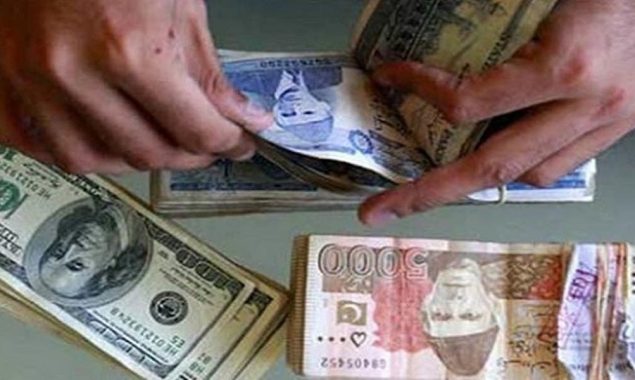
The exchange rate ended at Rs174.77 at the closing of interbank foreign exchange market. Image: File
KARACHI: The rupee-dollar parity will depend on the initiatives taken by the central bank to support the balance of payments position.
The local currency ended the week (September 20 to September 24, 2021) on another record low of Rs169.08 against the dollar. The rupee recorded an all-time low of Rs169.12 to the dollar on September 15, 2021.
The local currency witnessed a steep decline during the current fiscal year, starting July 1, 2021. It recorded a depreciation of Rs11.54, or 7.32 per cent, from 157.54 against the dollar since the start of the current fiscal year.
Several factors impacted the rupee value during this period, which included widening of the trade deficit, current account deficit, Afghanistan uncertainty, etc.
The major factors, which deteriorated the rupee value, can be attributed to Afghanistan’s political uncertainty. The Taliban took over the control of Afghanistan after the exit of the US forces in July 2021.
Following the takeover by the Taliban, the foreign currency account of Afghanistan in the US was seized, which created a liquidity issue for the neighbouring country for import payments. It is believed that a large amount of the greenback was smuggled to Afghanistan.
However, a day ago, the Federal Board of Revenue (FBR) categorically denied such reports and said that all incoming and outgoing passengers had been examined and the Customs authorities had ensured currency declarations.
The other major issue is the widening of the current account deficit. The current account deficit was recorded at $2.29 billion during the first two months (July-August) 2021, compared with the surplus of $838 million in the same months of the last fiscal year.
The widening of the current account deficit may be attributed to large trade deficit and slower pace of inflows in the shape of export receipts and workers’ remittances.
After the rupee hit an all-time low of Rs169.12 on September 15, 2021, the State Bank of Pakistan (SBP) reportedly intervened to support the local currency. However, the intervention was not sufficient to support the rupee. To support the balance of payments position, the central bank on September 23, 2021 took a major decision to ban bank financing for imported vehicles.
Further, the State Bank also restricts the bank loans in terms of money and timeframe for the locally-assembled motor vehicles.
According to the Pakistan Bureau of Statistics (PBS), the import of completely built units (CBU) of motor vehicles surged 125 per cent to $59.83 million during the first two months (July-August) of the current fiscal year, compared with $26.52 million in the same period of the last fiscal year.
Similarly, the import of motor vehicles in the Completely Knock-Down (CKD) kits registered an increase of 203 per cent to $256.21 million during the first two months of the current fiscal year, compared with $84.34 million in the corresponding months of the last fiscal year.
Analysts at Arif Habib said the efforts to curb imports may hurt the tax collection and domestic economic climate.
Catch all the Business News, Pakistan News, Breaking News Event and Latest News Updates on The BOL News
Download The BOL News App to get the Daily News Update & Follow us on Google News.




